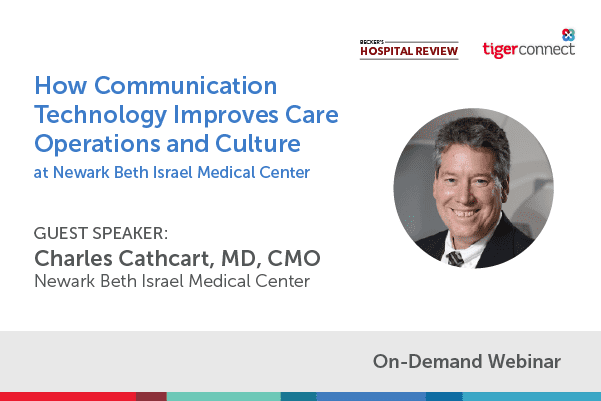Home / Blog /
The Benefits of Interoperability on Clinical Workflows

The Benefits of Interoperability on Clinical Workflows
It’s been estimated that healthcare spending in the US alone recently surpassed $4 trillion. While various factors contribute to this astronomical figure, one prominent issue is the lack of interoperability among healthcare systems and providers. Despite the rapid advancements in medical technology and digitalization, the healthcare industry continues to struggle with seamlessly exchanging patient information and medical data. This lack of interoperability not only hampers the quality of care but also drives up costs by creating inefficiencies and redundancies in the system.
One of the most complex challenges facing the healthcare industry is seamless and efficient clinical collaboration. Healthcare teams must be able to quickly communicate with one another to discuss patient diagnoses and treatment – and additionally access accurate clinical records instantaneously. Unfortunately, interoperability among clinical systems remains a challenge, slowing clinical communications and collaboration – which can significantly impact the length of patient stay, hospital costs, and quality of care.
How CC&C technology evolved communication at Newark Beth Israel Medical Center
|
 |
The clinical communication challenge
Hospitals continue to rely on outdated methods of communication and collaboration such as phone calls, e-mails, and pagers. Additionally, patient and treatment information is often stored in disparate silos, making it more difficult to access when needed. It also means information cannot easily be shared, a major roadblock preventing efficient care team collaboration. This impacts both the provider and patient – often leading to inefficient clinical workflows, and delays in care decisions. Ultimately, patient care is impacted, and providers increasingly suffer from burnout related to inefficient clinical workflows. But what if there was a way to bring all this communication and collaboration together under one system?
What is interoperability in healthcare?
As defined, clinical interoperability is the ability of disparate information systems, devices, and applications to integrate and exchange data in a coordinated manner. Ideal interoperability means there are no boundaries to data access or portability. Health data exchange requires not only real-time sharing but secure and compliant information exchange. That’s no simple task considering more than 2 million providers exchanged patient data more than 21 billion times in 2022. Yet despite the need, effective interoperability remains a challenge.
Notoriously, getting multiple EHRs or other clinical systems to talk to each other is a complicated task. The complexity and deep requirements for customization make interoperability a challenge – which is also becoming increasingly difficult with the lack of internal hospital resources to plan and execute the integrations. But there is a way forward for hospitals – and the remedy is often an integrated system that can act as the hub and make it easy for healthcare providers to access and act on the information.
Overcoming interoperability challenges with a clinical communication and collaboration platform
Clinical communication and collaboration (CC&C) platforms enable real-time communication via secure messaging, video, and voice calls. This allows care teams to make faster clinical decisions, speed up patient discharges, and improve patient satisfaction. CC&C platforms also facilitate healthcare interoperability by integrating with different clinical systems to provide a single source of truth, pulling in critical information into care team communication, and enabling healthcare providers to improve collaboration. Integrating the TigerConnect Clinical Collaboration Software Platform with existing clinical systems can remove interoperability challenges and streamline clinical workflows.
Multidisciplinary Rounds – Simplify patient discharges by securely communicating with all roles involved in discharge teams. An integration between a hospital’s scheduling system and TigerConnect help ensure the right roles are involved in the conversation, leading to faster discharges and decreased length of stay.
Emergency Department Consult – Reach the right on-call specialist in less time without checking an on-call schedule. With a TigerConnect and EHR integration, the moment a consult order is placed in the EHR, relevant patient information is automatically pulled into a secure message between the requesting provider and the on-call provider. This process enables providers to coordinate care in real time and accelerate patient throughput.
Critical Labs – Speed up critical lab notifications with an integration between laboratory information systems and TigerConnect. Critical labs are intelligently routed to the right care team members leading to faster clinical interventions and better patient outcomes. Replacing a manual call-back process with an automated critical lab workflow reduced the average notification time to 3 minutes for a TigerConnect customer.
Taking the next step toward interoperability
Attempting integration and interoperability in the hospital setting can be extremely challenging. More technologies and legacy processes mean greater complexity and disjointed communication. But strong clinical communication and collaboration makes it possible to integrate disparate systems and overcome many of the challenges associated with interoperability. Supplying a single view into all vital information, clinicians can more effectively make decisions and recommendations via a team-based healthcare approach.
With the TigerConnect Clinical Collaboration Software Platform, the entire care team can collaborate with contextual information from integrated clinical systems on patient care. The platform helps care teams communicate outside of information silos which reduces miscommunication and the risk of medical errors.
How is your hospital addressing the interoperability challenge? Learn how healthcare organizations like Newark Beth Israel Medical Center are effectively integrating clinical communication and collaboration to overcome these obstacles, improve the quality of patient care, and shorten patient hospital stays. View the webinar to learn more.
Learn more about Clinical Collaboration Software Platform, Resident Scheduling Software, Physician Scheduling Software, Alarm Management & Event Notification Software & Patient Engagement Software.
Tags: Clinical Interoperability, Length of stay, TigerConnect Clinical Collaboration, Clinical Communication and Collaboration, Healthcare Interoperability








